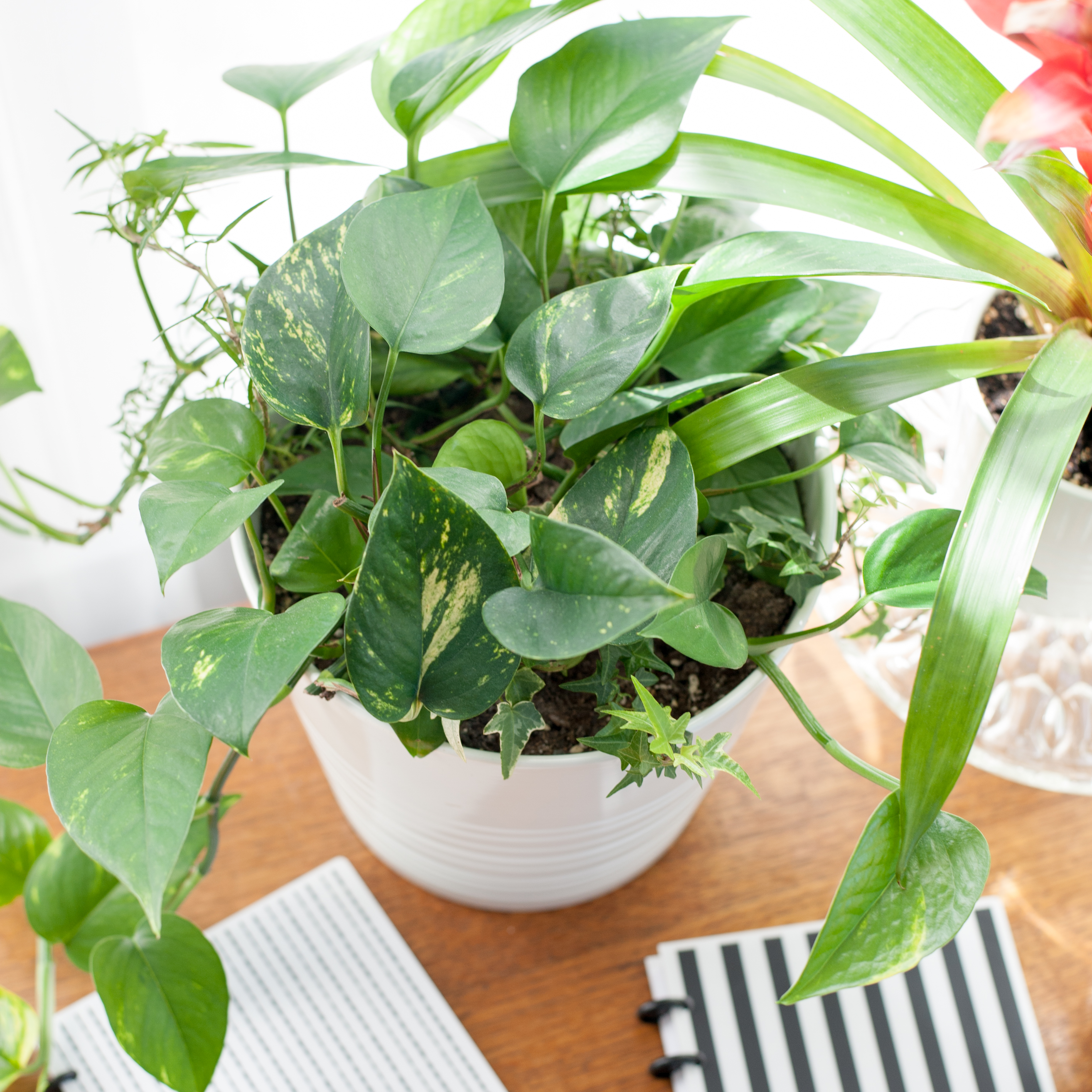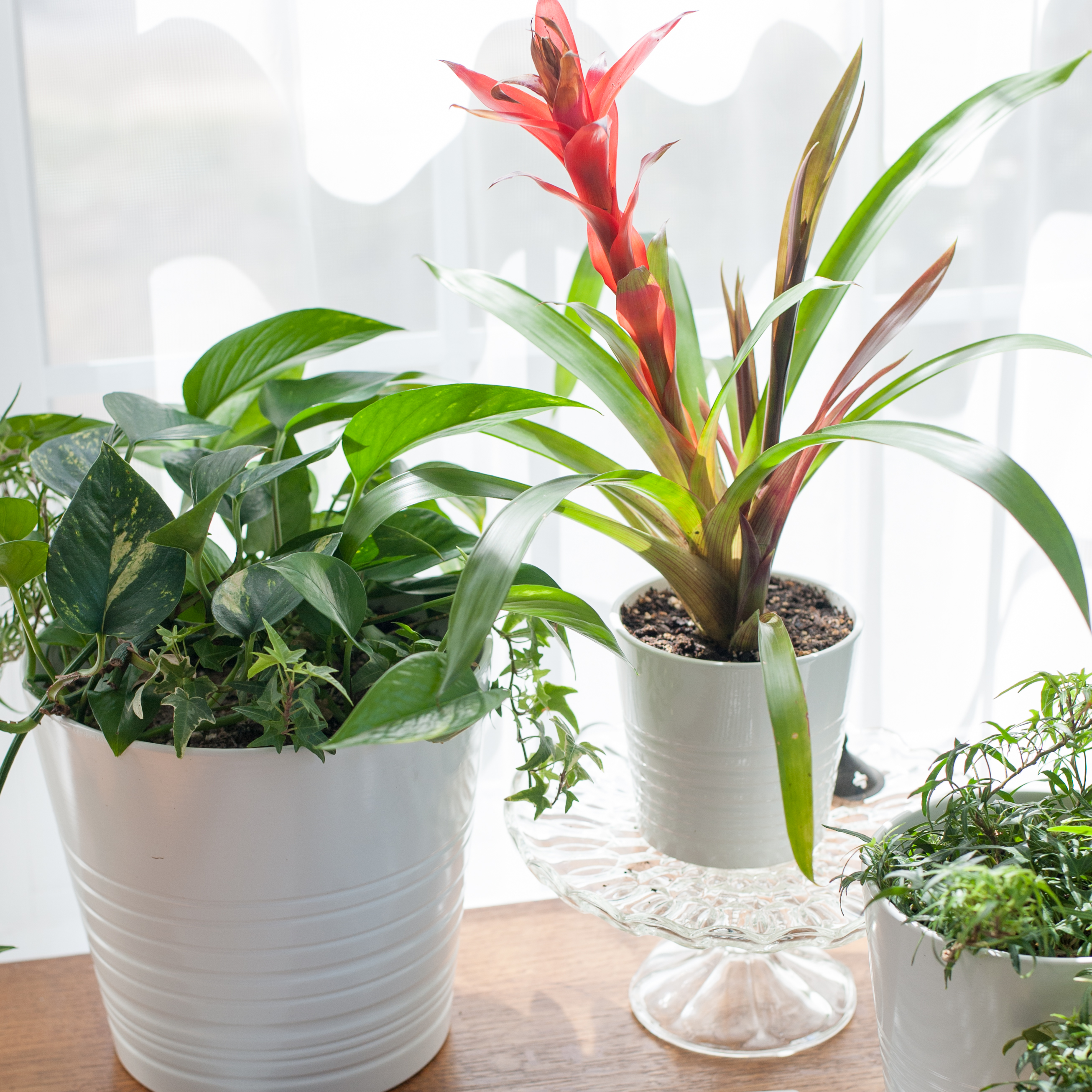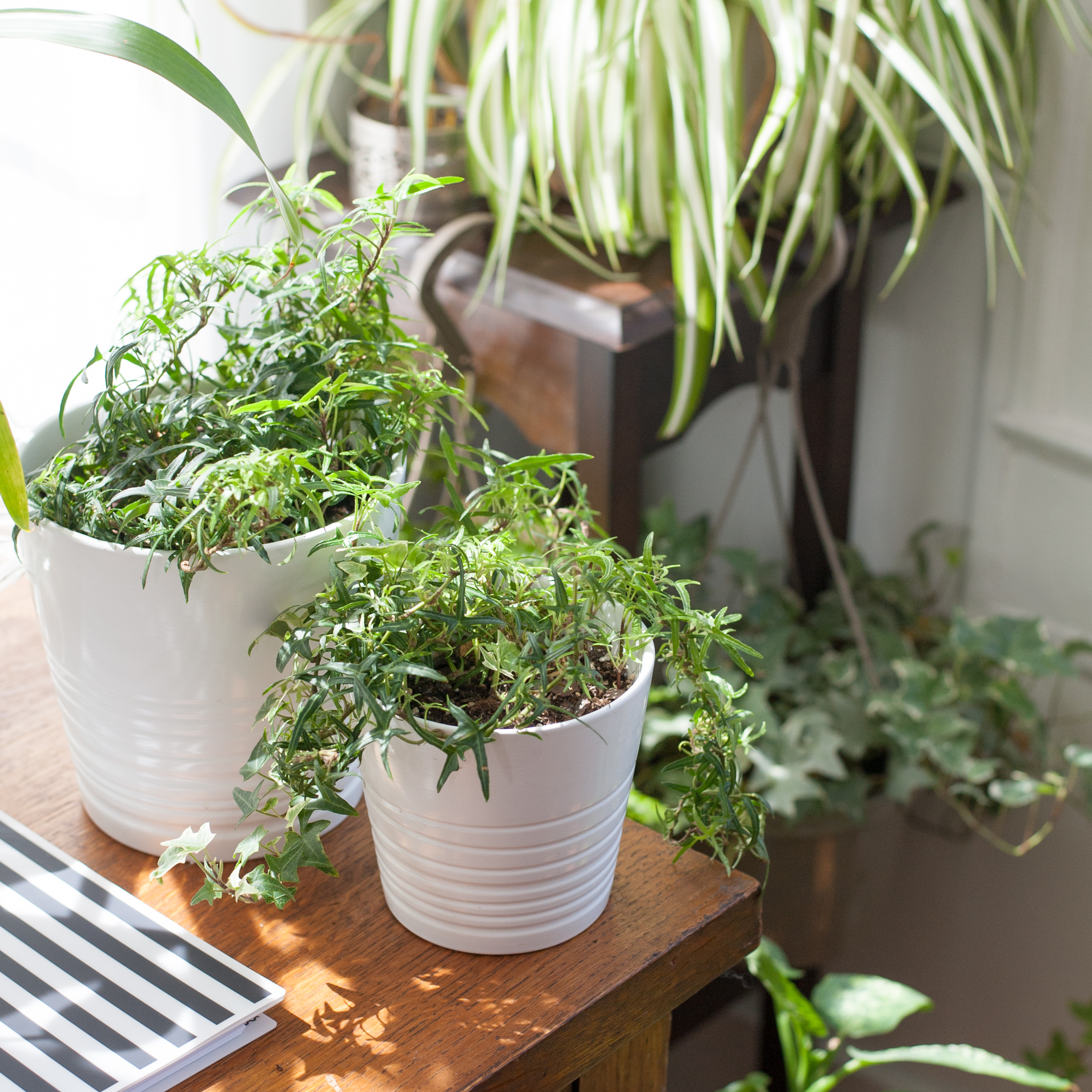My Top Five Tips to Turn Your Black Thumb Green
Mar 18th 2019

Once upon a time, I gave a good friend some plants for her birthday. She had always commented on how much she liked my plants and I thought it would be nice to give her some of her own. She was so excited when she saw them and I felt like an awesome friend. Then, a few months later, my friend, with a hint of guilt and shame, admitted that the plants were not doing well. Some of them had even died. She felt bad and then I felt bad that my gift made her feel bad. We were a couple of bad-feeling friends.
And then it happened again. With a different friend.
And again.
It took me a few years to realize that all my friends have Black Thumbs!
Not really. It's just that most of us have very little experience with houseplants.
Maybe you got a plant as a housewarming gift and, unsure about how to care for it, it sadly "failed to thrive." It sat there, on your kitchen counter and judged you as it shriveled up and died. You decided that you must not have a Green Thumb.
I'm here to tell you that isn't true!
After all, many of us can keep tiny little humans alive for years and years! Surely we can keep some plants alive!
I'm on a mission to help women see that it just takes a little bit of tweaking and your home can be filled with beautiful, air-purifying plants.
Now, when I give plants* to my friends, I give them my top tips about how to care for them. And it's made all the difference.

Tip #1: Light is more important than you might think.
For those of you who have tried (really tried!) keeping plants alive and just can't seem to make it work, I can almost guarantee that your plants aren't getting enough light.
My number one rule when bringing new plants into my home is that I must have a place to put them where they get enough light. In fact, and this is probably a bit extreme, I decorate and place furniture in each room primarily with plants in mind. I don't put a plant on a table because it looks nice there. I put the table near a window with good light and then put a plant on it. If your plants are an afterthought, they won't get enough light and they are doomed to fail.
Here's the way I think about houseplants: in order to live inside our homes where the temperature stays around 70 degrees year round, houseplants basically need to be tropical. This means they are going to like bright light and humid air. There are exceptions, of course, but the majority of houseplants need more light than we are giving them.
So, how do you know where to put your plants? Is it the north-facing window? Or maybe the west facing? What if I don't even know which windows in my house face north?!
Here's my suggestion- close your eyes right now and imagine that you need to tweeze your eyebrows at 10am but the power has gone off. You can take your tweezers and mirror with you into any room and face any direction. (Maybe you should actually do this as an experiment! I know my eyebrows need some attention...) What rooms give you the best natural light for your eyebrows? Where is the best place to stand in those rooms?
Now, are any of those spots places where a plant could go? What about an area close to those spots? If you can find the light in your home, and locate your plants in those spaces, I bet you will have much happier plants. And you'll be well on your way to a Green Thumb!
Tip #2: The type of plant matters a lot. A whole lot.
I did not know this particular tip for a long time. Instead of buying plants that were "easy" to tend to, I bought plants that looked pretty in the store. Those cute little miniature rosebushes are adorable, but they are not easy to grow inside. And do not get me started on miniature orchids.
The best plants to start with, in my opinion, are philodendren and spider plants. They are very forgiving with respect to both light and moisture. And, as a bonus, they are fantastic plants for propagation. That means you can trim pieces from the main plant and stick in them in a vase of water. After a few weeks, they will grow roots and you can plant those as new plants. There is nothing that says "I have a Green Thumb" like making new houseplants from an existing one.
Tip #3: The pot matters a lot, too.
The pot holds the soil which means it holds the moisture. A small terra cotta pot is going to allow the dirt to dry out much more quickly than a larger glazed or plastic pot. There are some plants for which a terra cotta pot is exactly the right choice, but for philodendren or spider plants and other plants that need moist soil, I would opt for a nonporous material.
The size of the pot matters, too. If you aren't sure, I suggest buying a pot that is at least 1-2 sizes bigger than the one the plant came in. You will need to add a bit of potting soil to the plant, but that will only help the plant thrive.

Tip #4: Water your plants once a week
For the tropical type of plants we're discussing here, watering them once a week is a good rule of (a green!) thumb. I struggled with watering my plants for years before I realized this. I was always overwatering or underwatering. I couldn't get it right! Then, I decided to only water plants on the weekend and think of it like another household chore. This helped tremendously! It took the guesswork out because I was reasonably sure when I watered them that I hadn't just done it (my memory is not the best, but if it's Sunday even I can remember if I've watered them yet that weekend.)
So, how much do you water? Well, it all depends, right?! How big is the pot and how big is the plant? Thankfully, for our philodedren and spider plants, they like moist soil but they can also survive if you forget them and the soil dries out. They may start to wilt but after a good watering, they will perk right up.
I always tell my plant-phobic friends to buy a pot with a drainage hole. That way, when you water once a week, you can water until the plant starts to "pee" out the bottom, letting you know that the soil is nice and saturated. The drainage hole means that even if you overwater the plant, the extra water won't sit in the bottom, potentially causing issues with the roots rotting.
One more note about watering- if you overwater consistently and your plant is near a window, you may get some little gnats near your plants. This means that the top of the soil is too moist and the gnats are laying eggs there. Just let the plant dry out a bit (maybe skip a week of watering) or put it outside for a day or two. The gnats will go away and you'll know to cut back on the amount of watering.
Tip #5: More plants are easier to care for than just one
This sounds counterintuitive I know, but I've found it to be true for me and for many of my friends. If you only have one lonely little philodendren plant sitting up high on a bookshelf, you are likely to forget about it. But, if you have 5 or 6 plants clustered together in a prominent place that you walk by everyday, you are much less likely to neglect them.
So instead of buying that miniature rosebush on impulse at Whole Foods, and then after it slowly dies concluding that you have a Black Thumb, try buying several philodendren and spider plants. Then put them in a spot that gets some nice eyebrow-tweezing light, water them once a week in a plastic pot that has a drainage hole, and watch them thrive!
What having a Green Thumb really comes down to, is paying attention. Remember, if you can keep children alive, you can do this!
* I'm making a distinction here between houseplants and succulents. The tips in this article are not all applicable to succulents but they are great for the more tropical houseplants like philodendren and spider plants.
Interested in more tips and tricks? Subscribe to our newsletter here (and get a $5 coupon code!) and follow us on Facebook and Instagram.
Looking for ways to get (and stay!) organized? Check out our shop that features products designed just for you!
